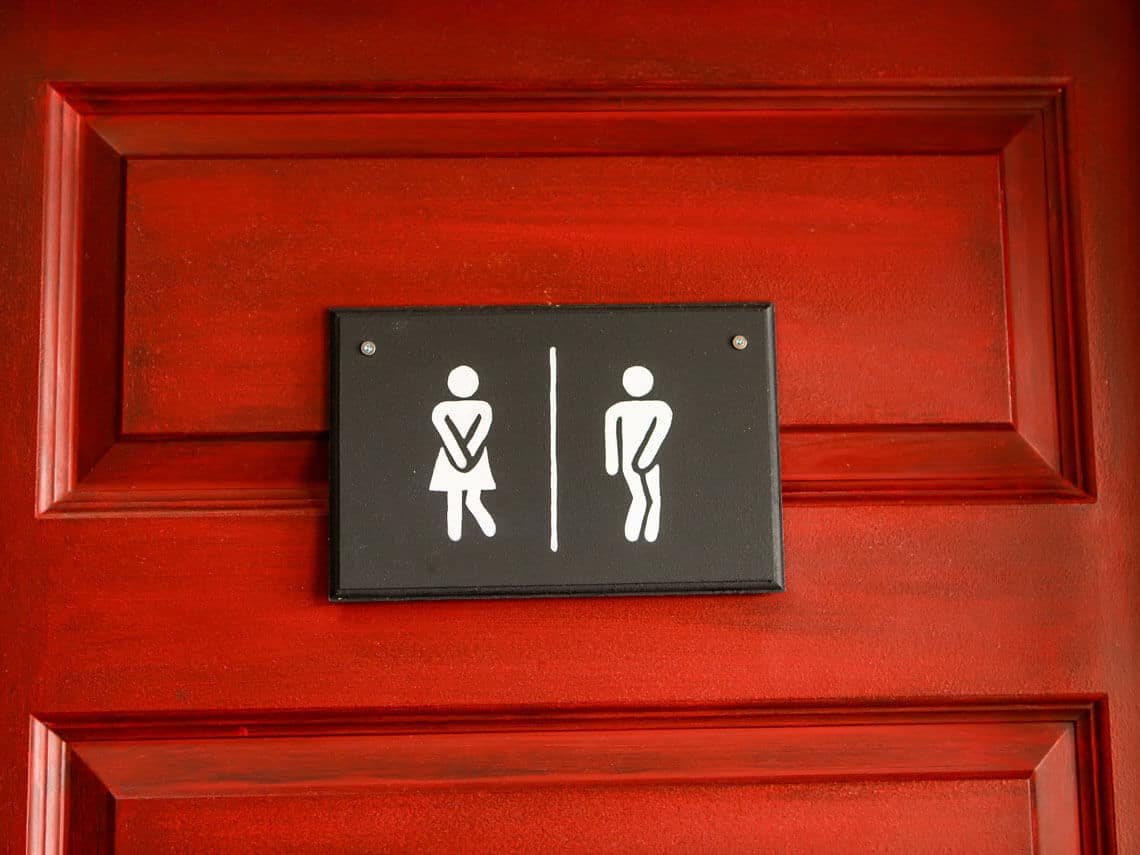Experiencing a disconnect between your bladder and the output of the flow is concerning. Perhaps you are having trouble peeing, meaning nothing is coming out even though you feel the urge to empty your bladder. Some men find it difficult to prevent urinary flow or the opposite—urinary hesitancy.
Either way, urinary problems are not uncommon, but understanding them better is where progress begins.
How Does Urinary Hesitancy Develop?
Part of urinary hesitancy is identifying the possible causes of such issues.
The following factors might contribute to difficulty urinating.
Enlarged prostate, or Benign Prostatic Hyperplasia (BPH)
BPH affects millions of men in the U.S. and is one of the most common causes of urinary retention. This is because the prostate sits in front of the bladder, and as the prostate grows, it slowly chokes off urination. Think about stepping on a garden hose while watering your lawn. In order to get more urine out, you have to turn up the water pressure, which in your body is the bladder. The bladder is a muscle and over time, the muscle works harder and harder to empty the bladder. Eventually, you may develop symptoms such as a longer time to urinate, slower stream, frequent urge to urinate, and possibly nighttime urination.
Scar Tissue
Not just any scar tissue, but specifically the tissue found within the urethra is known to narrow the tube that runs through the bladder. How does scar tissue develop in the first place? The most common cause is an injury to the groin. This could be from sports, combat training, surgical procedures, or receiving a catheter in the past. Any of these situations may result in scar tissue development.
Medication
Some medications are known to carry pharmaceutical ingredients that consequently reduce bladder outflow. Side effects from certain antidepressants and the decongestant, pseudoephedrine, lead to difficulty urinating.
Neurological disorders
Multiple sclerosis (MS) or other neurological disorders causing nerve damage make it harder for the bladder to communicate to the brain that it needs to be emptied.
How is Urinary Hesitancy Managed or Treated?
Should you experience any pattern of urinary issues, it’s important to contact your doctor right away. Your doctor may recommend you take some of the following measures to help alleviate symtoms and create a plan to treat the underlying condition.
Timing your bathroom visits
For starters, it may be helpful to remember to use the restroom every three hours to keep your bladder from becoming too full. You might want to set an alarm to break up a busy schedule and use the restroom whenever you have a chance. Holding a full bladder only weakens the already strained urethra.
Take a hot bath
Immersing yourself in a hot bath relaxes your pelvic floor muscles which may relieve associated dysfunction in this area.
Physical Therapy
Yes, there is such a thing as physical therapy for urinary hesitation. Specific exercises aimed at relaxing the pelvic floor should make it easier to relieve yourself when you need to.
Nerve-stimulating implant
When there’s nerve damage, a sacral nerve-stimulating implant may best help stimulate bladder function. The idea is for the bladder to receive prompts that are no longer available through the body’s natural nervous system and brain communication.
Prescription Drugs
When an enlarged prostate is to blame, some medications are useful in shrinking the enlarged size of the prostate, reducing the stress on the urethra.
Surgery
Surgically removing scar tissue from inside the lining of the urethra is a common option. Peeing with more ease may also occur when the prostate is surgically removed or altered to relieve pressure on pelvic floor muscles. Fortunately, there are minimally invasive surgical options available. For those with relatively mild to moderate symptoms of BPH, the new UroLift® procedure takes only 5-10 minutes and achieves significant improvement in symptoms immediately. For those with more severe symptoms, Greenlight XPS™ Laser Therapy for BPH is a treatment that is less invasive with less discomfort and quicker recovery than traditional BPH surgery.
Hopefully, these signifiers are enough to help you get an idea of why you’re having trouble peeing and what you can do about it in practical and more medically advanced ways.
Integrative Urology Provides Minimally Invasive Procedures in Phoenix
Patients at Integrative Urology receive a full individualized health analysis and treatment plan for the most effective outcome. By merging cutting-edge technology with proven effective treatment solutions, Dr. Hong provides patients with a clear and effective strategy based on his detailed holistic knowledge of the body and all types of urological ailments.
Led by Dr. Y. Mark Hong, a world-renowned leader in innovative urology solutions, Integrative Urology provides high-tech solutions in a compassionate environment.
If you suffer from any issue related to men’s health, contact Integrative Urology for a discreet and private appointment. A consultation and testing can put your mind at ease, whether you require specialized treatment or not.

